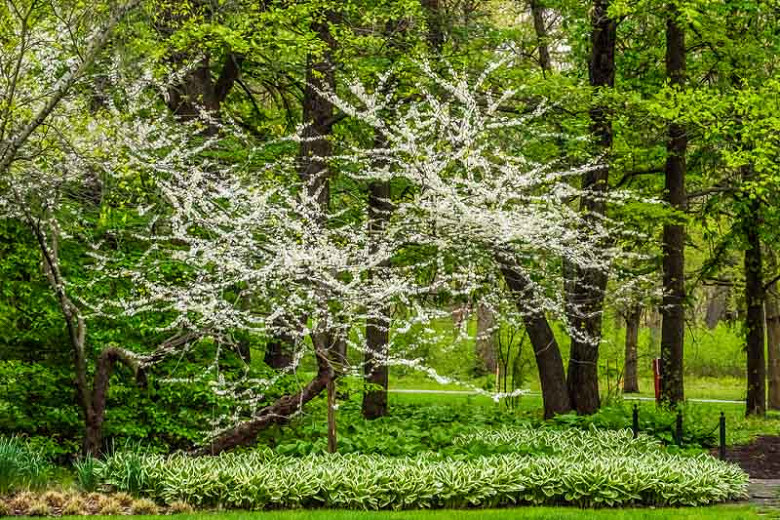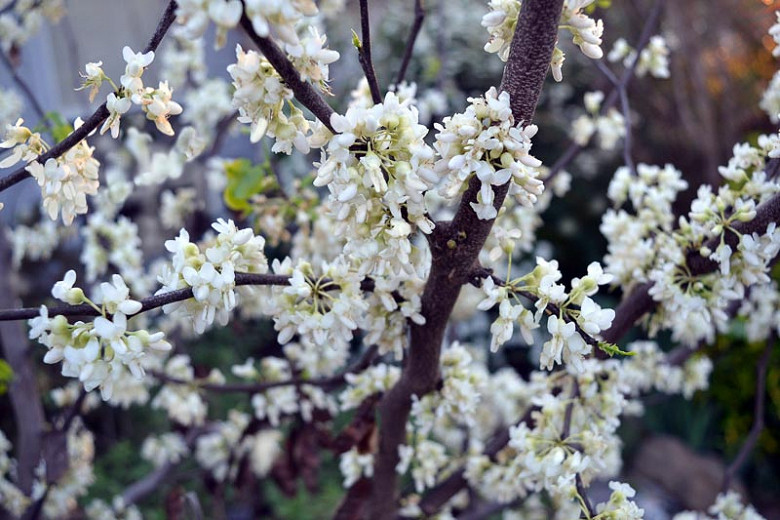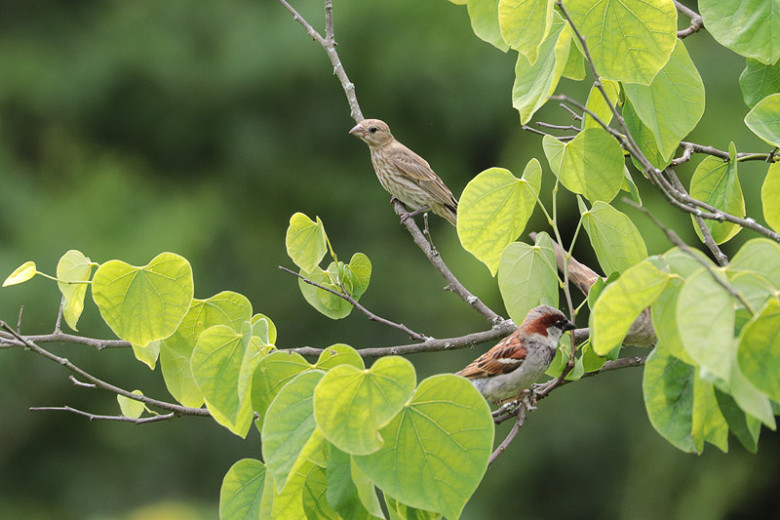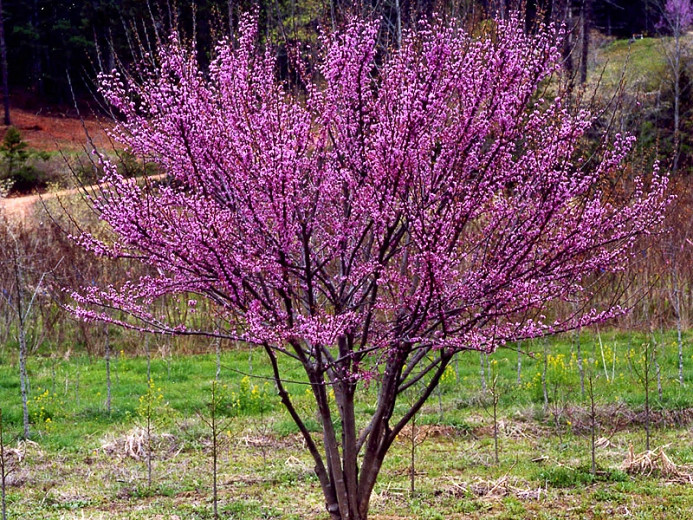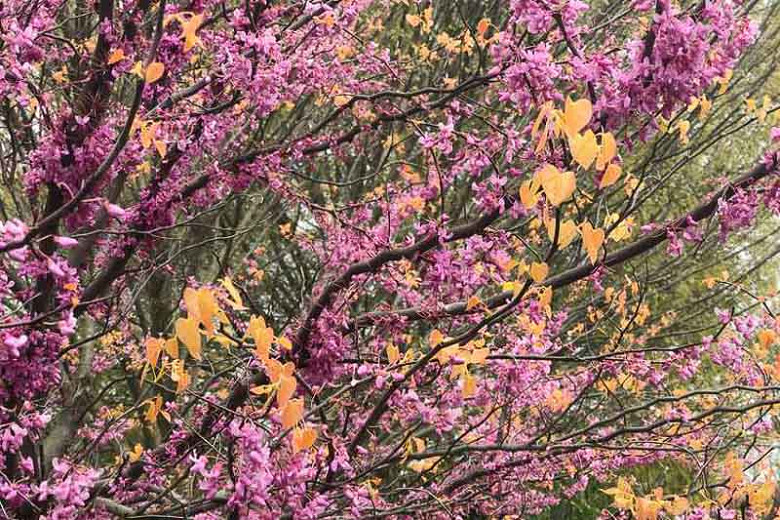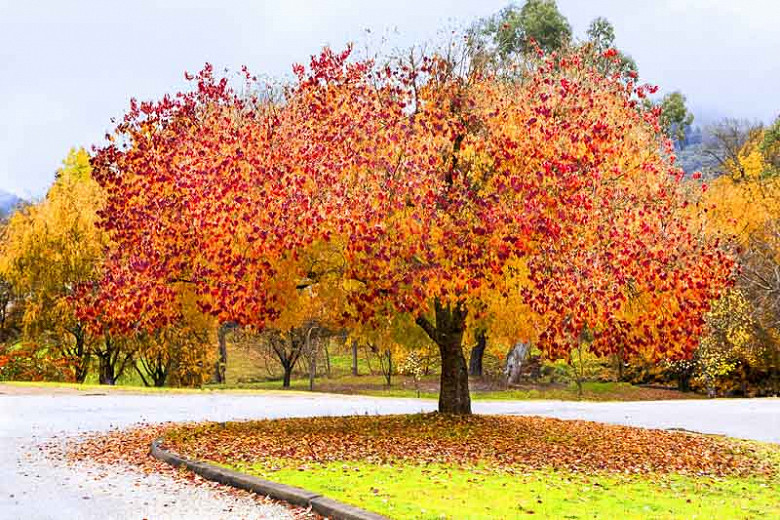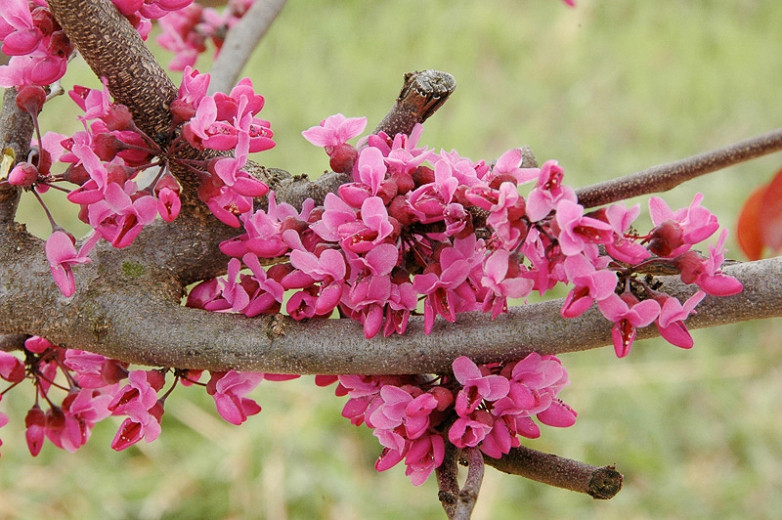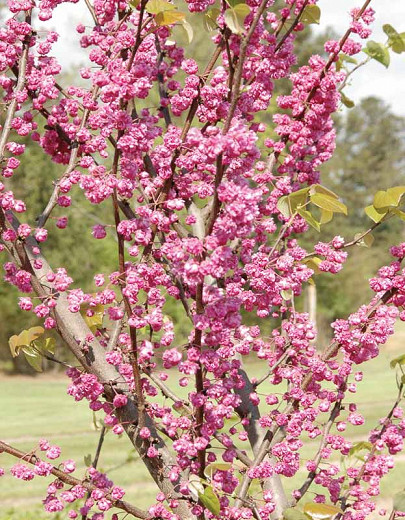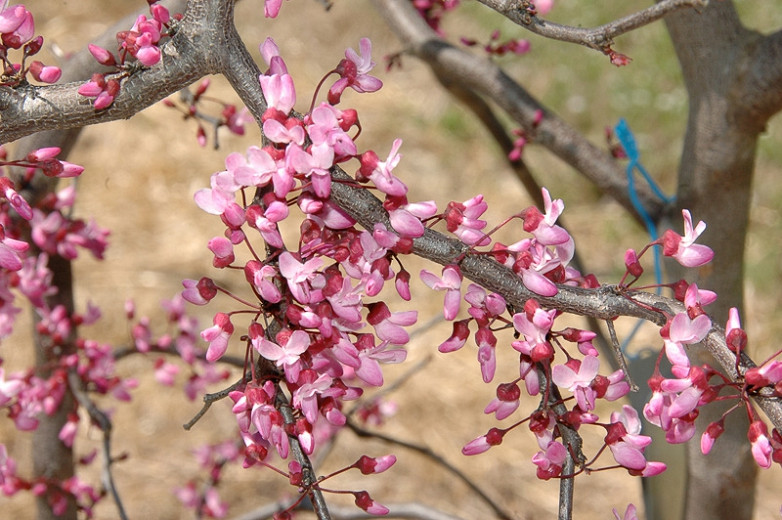Cercis canadensis f. alba (White Eastern Redbud)
Noted for its showy spring flowers, Cercis canadensis f. alba (White Eastern Redbud) is a deciduous, often multi-trunked tree with a graceful flat-topped vase-shape habit. Masses of pea-like pure white flowers held in clusters cover the bare branches in the spring, before the foliage emerges, creating a most dramatic display. Honeybees use the flowers for pollen. Butterflies and hummingbirds utilize Eastern Redbud for nectar. The luminous blossoms give way to bean-like, brown seedpods which adorn the branches in summer and may persist into winter. Emerging bright green-tinged red, the rounded, heart-shaped leaves mature to dark blue-green in summer, before turning pale yellow to greenish-yellow in the fall. As the leaves drop, they reveal the unique and irregular branching patterns and pleasing silhouette of this Redbud. Cercis canadensis f. alba adds elegance to any space. Plant in a shrub border for a spring and fall color display.
- Grows up to 20-30 ft. tall (6-9 m) and 25-35 ft. wide (7.5-10.50 m).
- Eastern Redbud is found on a variety of sites ranging from xeric to mesic but grows better on moist, well-drained sites in full sun or light shade. It does not usually grow on flooded sites because it cannot endure inundation or survive in poorly aerated soils. The best flower production is obtained in full sun, but part shade is best in hot summer climates. Needs a winter chill before the flowers set properly.
- Perfect choice as a specimen plant or for shrub borders.
- Keep an eye out for treehoppers, caterpillars, scale, leafhoppers, canker, verticillium wilt, and leaf spots. Deer resistant.
- Does not transplant well. It should be planted when young and left undisturbed.
- Needs very little pruning. Remove diseased, damaged congested, or crossing shoots.
- Propagate by semi-hardwood cuttings
- Cercis canadensis species is native to eastern and central North America from Connecticut to New York to southern Ontario and the Great Lakes south to western Texas and Florida.
Requirements
| Hardiness | 4 – 9 |
|---|---|
| Heat Zones | 2 – 9 |
| Climate Zones | 1, 1A, 1B, 2, 2A, 2B, 3, 3A, 3B, 4, 5, 6, 7, 8, 9, 10, 11, 12, 13, 14, 15, 16, 17, 18, 19, 20, 21, 22, 23, 24 |
| Plant Type | Trees |
| Plant Family | Cercis – Redbuds |
| Exposure | Full Sun, Partial Sun |
| Season of Interest | Spring (Early,Mid)Fall |
| Height | 20' – 30' (6m – 9m) |
| Spread | 25' – 35' (7.5m – 10.5m) |
| Water Needs | Low, Average |
| Maintenance | Low |
| Soil Type | Chalk, Clay, Loam, Sand |
| Soil pH | Acid, Alkaline, Neutral |
| Soil Drainage | Well-Drained |
| Characteristics | Showy |
| Native Plants | United States, Midwest, Illinois, Indiana, Iowa, Kansas, Michigan, Missouri, Nebraska, Ohio, Northeast, Connecticut, Delaware, Massachusetts, Maryland, New Jersey, New York, Pennsylvania, Southeast, Alabama, Arkansas, Florida, Georgia, Kentucky, Louisiana, Mississippi, North Carolina, South Carolina, Tennessee, Virginia, West Virginia, Southwest, New Mexico, Oklahoma, Texas |
| Tolerance | Clay Soil, Deer |
| Attracts | Bees, Butterflies, Hummingbirds |
| Garden Uses | Beds and Borders, Wall-Side Borders |
| Garden Styles | Informal and Cottage, Traditional Garden |
